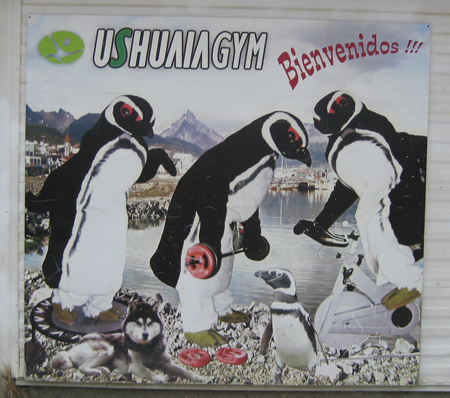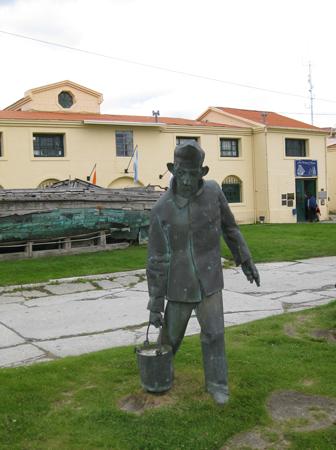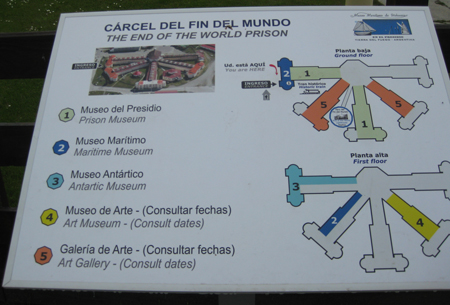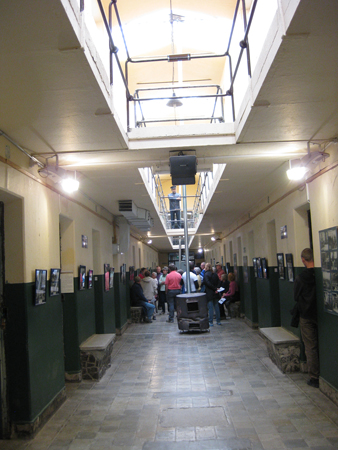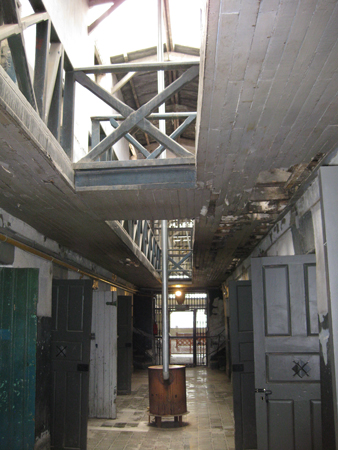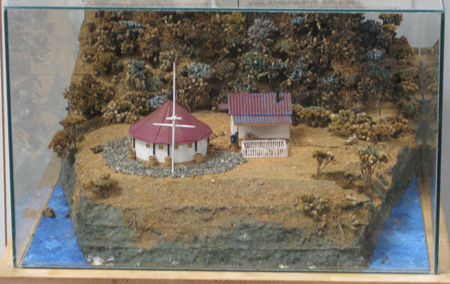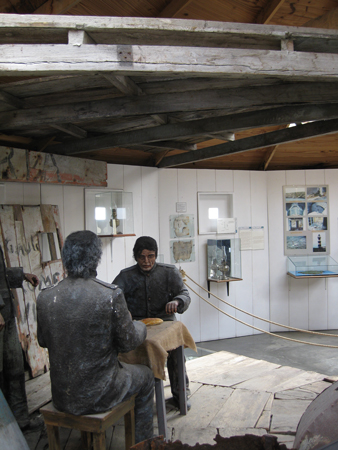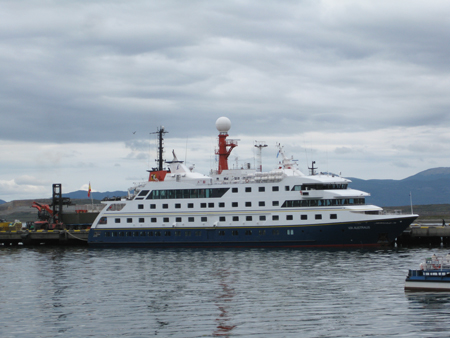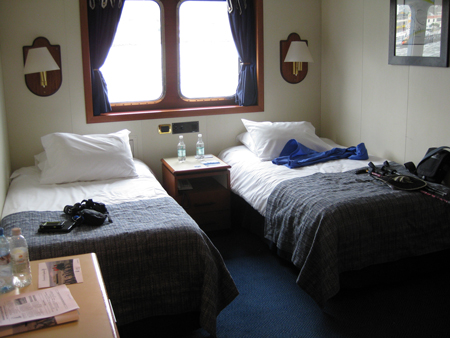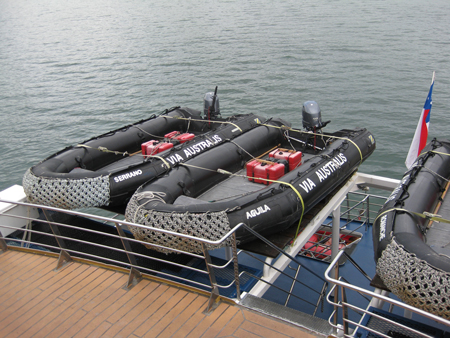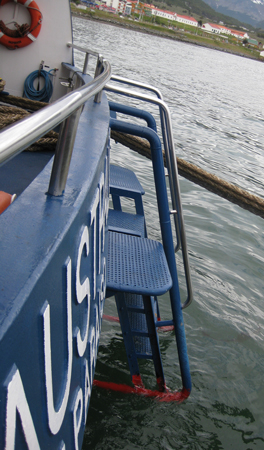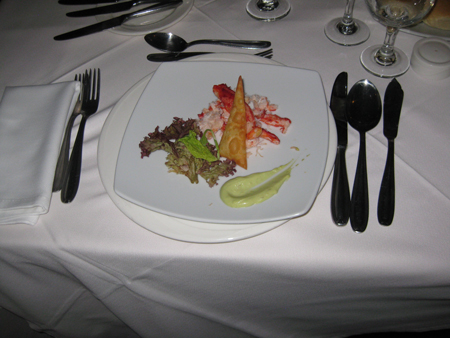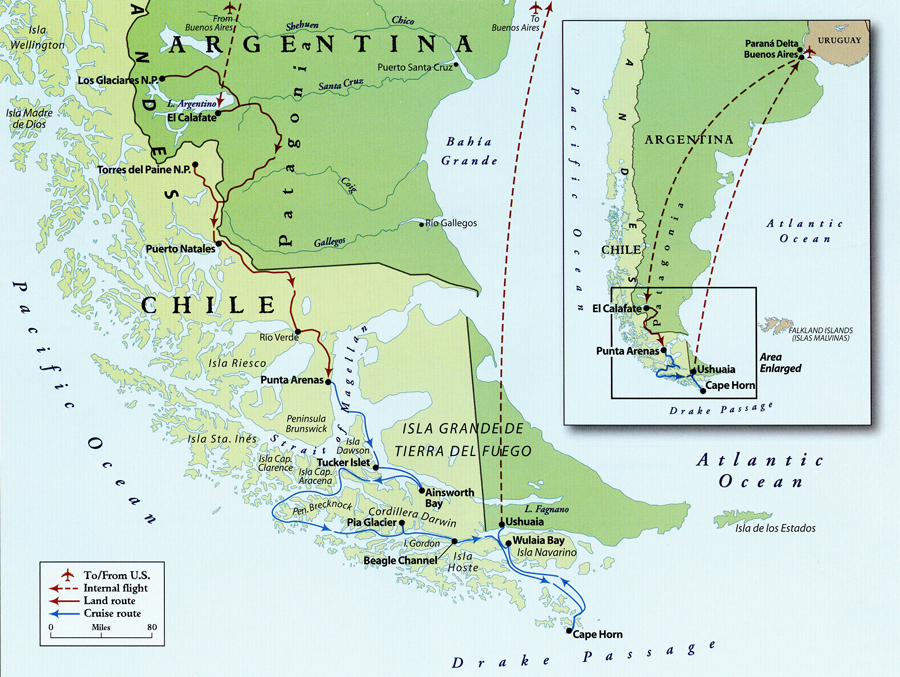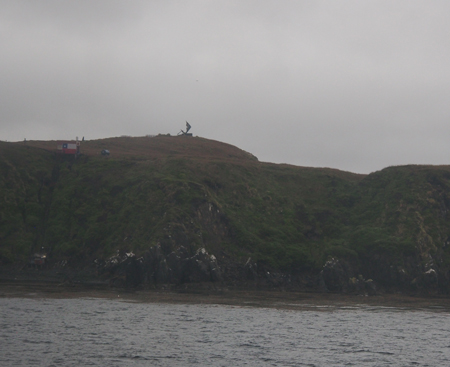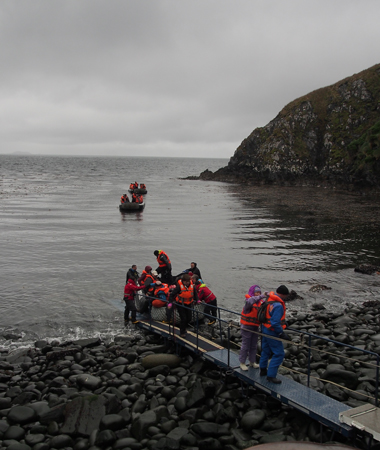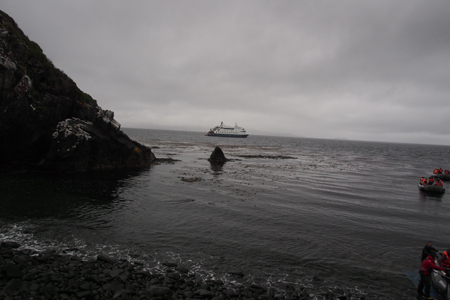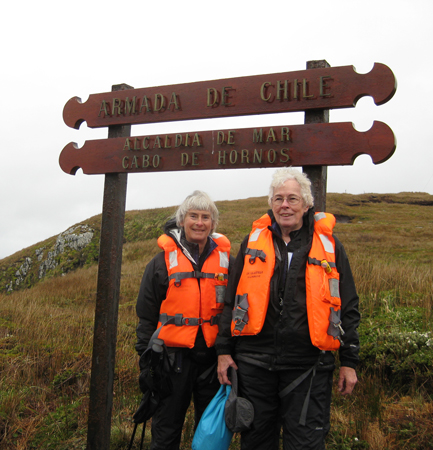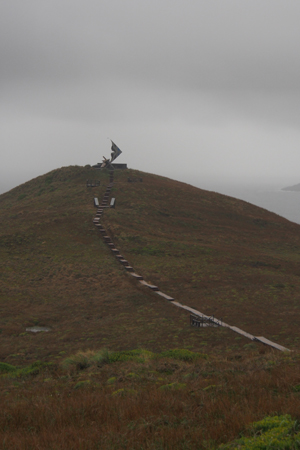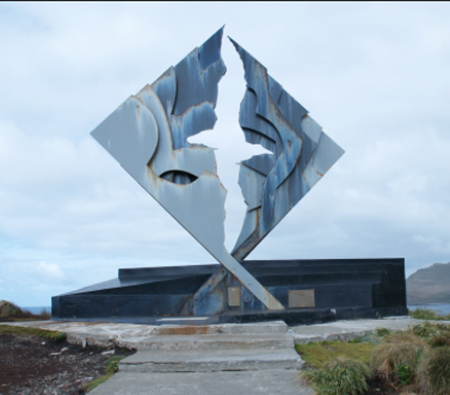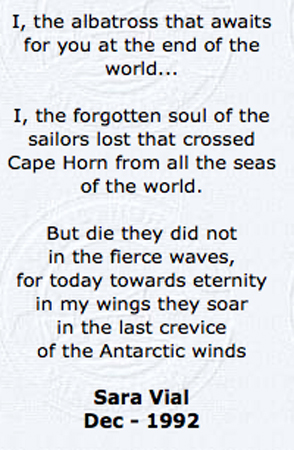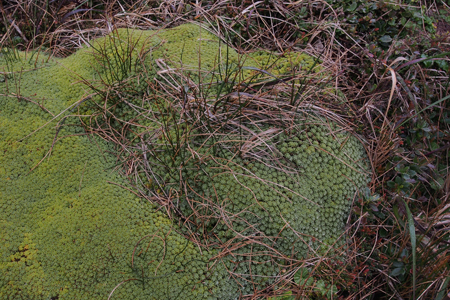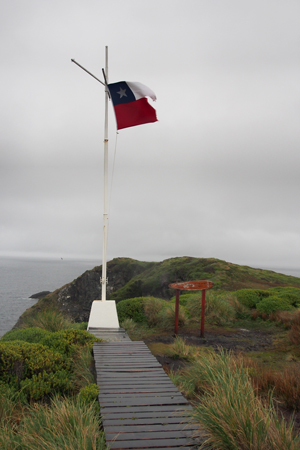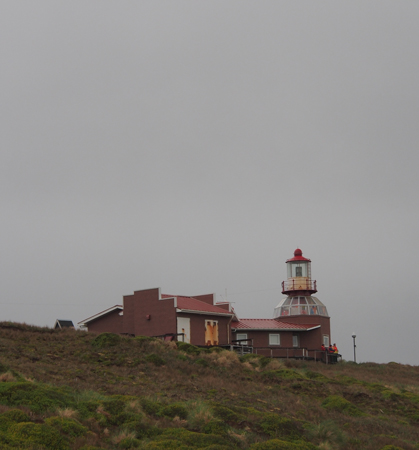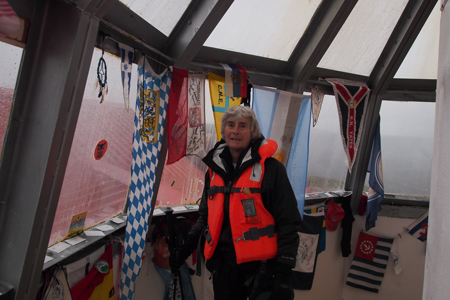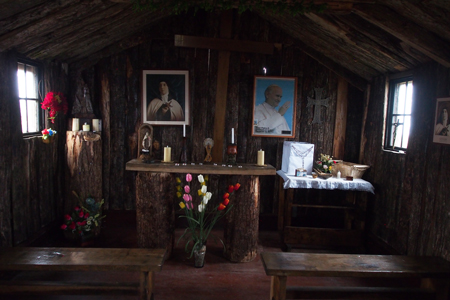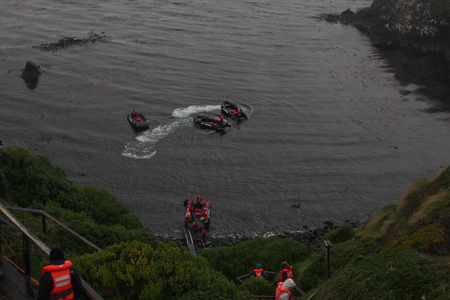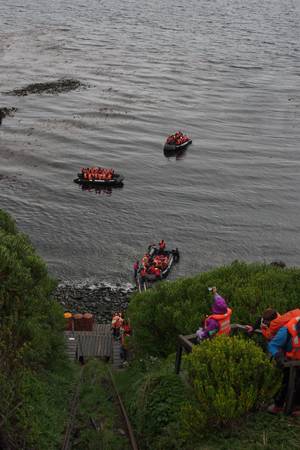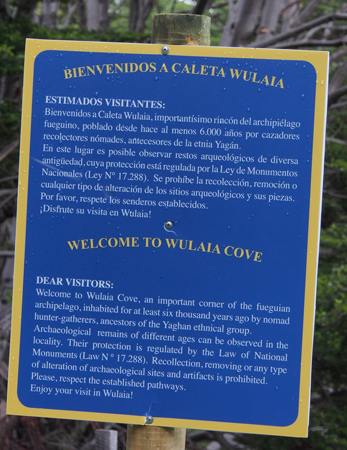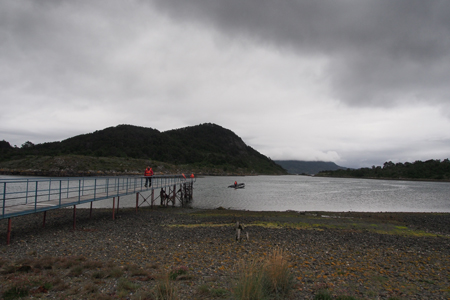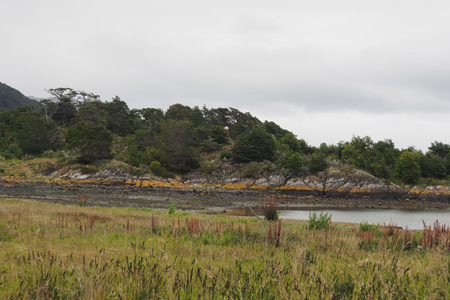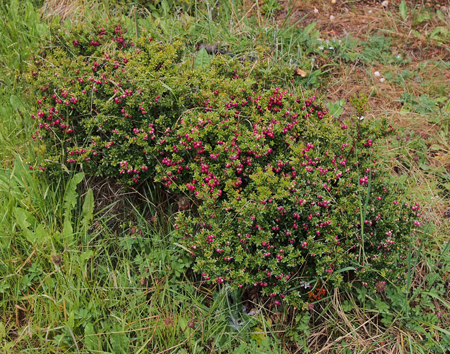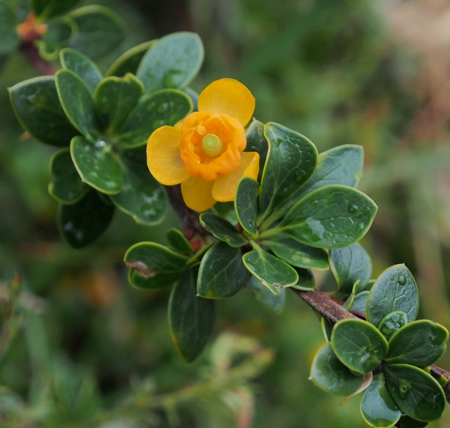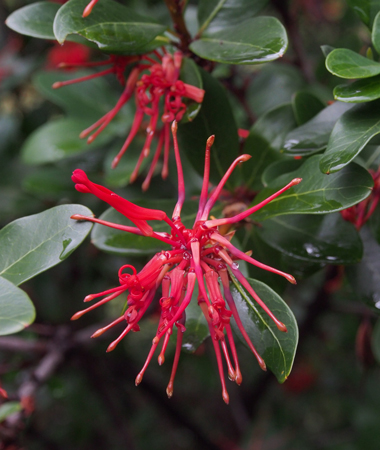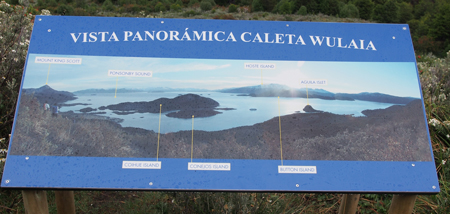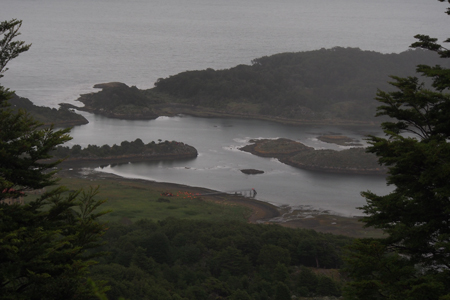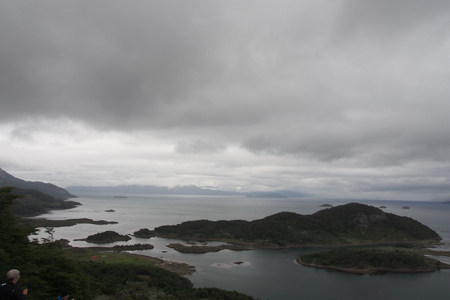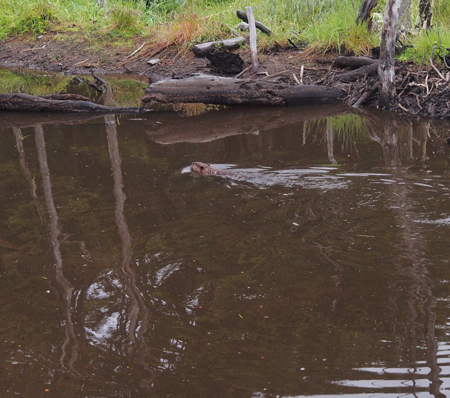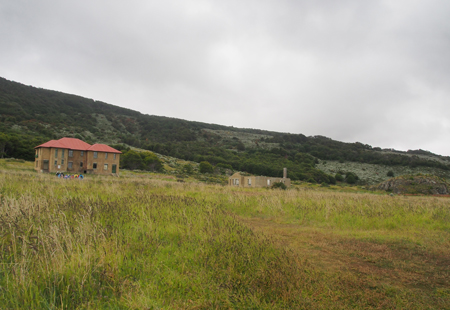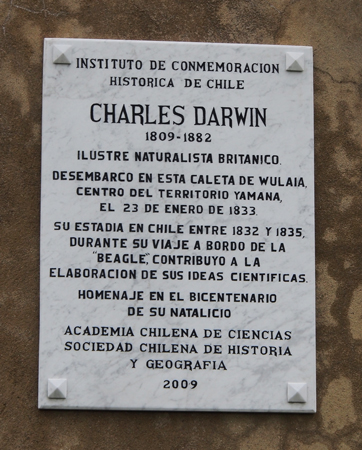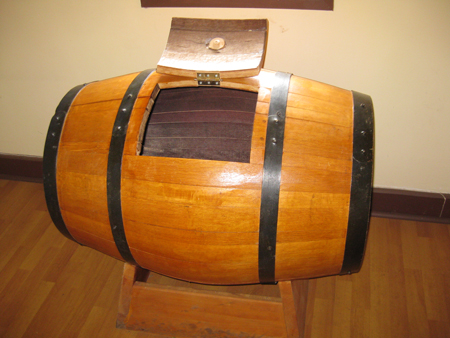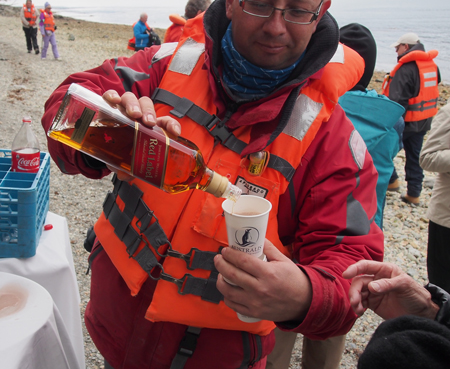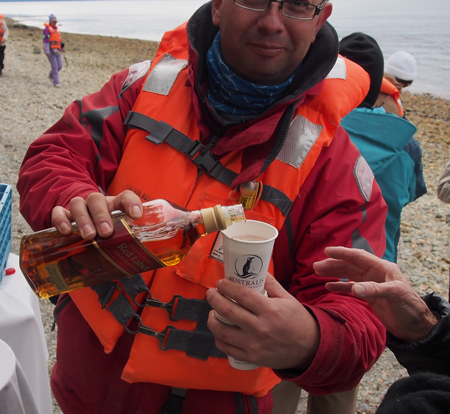At 3 PM we took the tour of the Prison Museum. The prison here was for second offenders and then anarchists and opponents of the ruling government. The prisoners had to build their cell blocks and lived under terrible conditions. The cells were small, the lavatories like what we saw in Nazi concentration camps, and the only heat came from wood stoves in the corridors. They were fed only bread and water. The tour led us through a partially reconstructed cellblock, which is now the museum and then we walked through a cellblock that remains in its original condition. Outside we entered a restored old lighthouse that used oil lamps behind Fresnel lenses in eight windows.
At 4 PM we found the shops open and actually found an Antarctica spoon I couldn’t find in 2012. It made my day!
Neat sign on a gym
Outside the prison museum
Prison
Corridor
Only source of heat
Model of restored lighthouse
Inside the restored lighthouse
At 5 PM our bus took us from the parking lot into the port so we could embark the Via Australis ship for our cruise in the fjords of the Chilean side of Patagonia. We have a very nice, roomy cabin for such a small boat. There are only about 120 passengers.
We sailed all night in the Beagle and Murray channels on our way to Cape Horn.
Dinner on the boat is at 8 PM and lasts until at least 10 PM. This is a typical Latin mealtime. For dinner we had a cold crab starter, soup, a hunk of lamb shank on lumpy mashed potatoes, and ice cream and apple cobbler for dessert.
Via Australis
Our cabin
Zodiacs for landings
Ladder down to the zodiacs
Appetizer
Tues., 12/30/14 – Via Australis
We were up and dressed in five layers of clothing with rain jacket and pants and life jacket on to wait in the sky lounge (4th deck) to walk down to the bottom deck to get into a zodiac for the ride across to Cape Horn. Cape Horn Island was designated as a World Biosphere Reserve by UNESCO in 2006. It was raining lightly but the ocean was calm and we were lucky to get on shore. There is less than a 50 – 50 chance of landing here. We walked up 197 wood stairs and across a wooden boardwalk to go look at the lighthouse and Albatross Monument.
Map illustrating our trip - we did it in the reverse order from that shown
Cape Horn and the Albatross Monument
Disembarking at Cape Horn
Zodiacs and the Via Australis
Another successful "bucket list" visit
We walked up to get a somewhat closer look at the Albatross Monument. The monument is (was) a two part metal piece with the hollow figure of an albatross in between the two pieces. It was built to withstand the large force winds that blow across the Cape Horn Island but it broke apart in the high winds of only 10 days ago.
We walked back and over to the lighthouse, which the keepers keep open for visitors. The keeper of the light is a Chilean Navy position for one year in this isolated place. He maintains the Chilean ownership of the Cape and can live there with his family. We walked in and up to the 360° observation deck and back into his “office” to receive a paper document verifying that we were there.On the way back to the ship with the sky falling and light rain, but almost no wind, we looked into the tiny Chapel of Stella Maris (Catholic) with pictures of four Popes, but not the Argentinean Pope Francis. We also looked at the monument to lost sailors. There have been over 600 shipwrecks near Cape Horn. Crossing from one ocean to the other with the wind direction different in each ocean creates nasty navigation conditions, especially for sailing ships. Our zodiac landing, however, was smooth and easy even in the rain.
Albatross Monument
Albatross Monument - from the Internet before it was blown apart by the wind
Moss and plants next to the boardwalk
Wind blown flag
Lighthouse
Gale inside the lighthouse
Chapel of Stella Maris
Interior of the chapel
Down the steps
Back to the boats
At 4:30 we had a second zodiac landing at Wulaia Bay. We took the forest hike up through greenery and mud to a nice viewpoint of the bay and nearby islands. We walked up a trail sometimes on boardwalks and sometimes on rocks or in mud through a lenga forest. There were some plants we recognized and wonderful views of the bay and hillsides and islands. At the top we had a time of silence to listen to wind in the trees and running water. We looked down where the Yaghan people lived a primitive life and then sheep ranchers cut down 250 year-old trees to graze their sheep. The sheep ranch was dismantled in 1952. On the trail we saw several bright red fire bushes – with flowers resembling fire works. We also stopped at an old beaver dam and lodge and I saw a male and then a female beaver swim away from our noisy group. That was a treat.
The other option at Wulaia Bay was a coastal walk with talks about the Yaghan original inhabitants of the area and their encounters with European explorers and Anglican missionaries and sheepherders. We read some of this history in the old building (once a naval radio base), which is now an information center set up by the Australis ship company and visited by their ships’ passengers.
A dock to land at!
High water marks on the rocks
Calafate berries
Calafate blossom
Fire bush (Notro)
View from the top
View from the top - the dock is so far below
View from the top
Beaver
Building at the old naval base
I think it says Darwin was here
Post Barrel
One room of the information center contains a post barrel. Sailors, and now tourists, can drop post cards in the barrel to be delivered by the next ship or traveler who would hand deliver mail addressed to their destinations.
Before taking zodiacs back to our ship, we were served hot cocoa with shots of whiskey! We got back on board at 8 PM when dinner was served.
Keep pouring!
Hit the spot!
| Return to Top | Return to Itinerary | Return to Trips page to view other trips | Return to Dreamcatcher Home Page |
